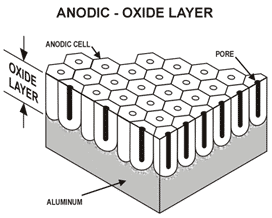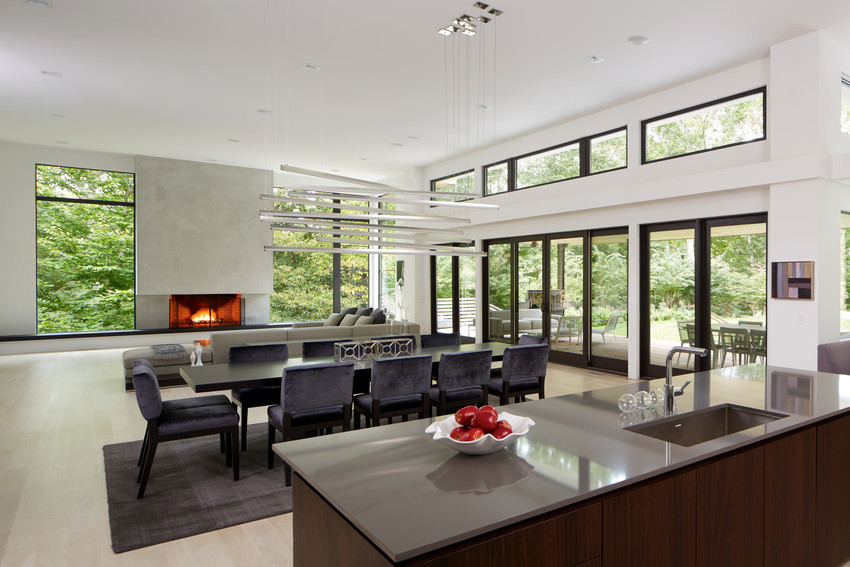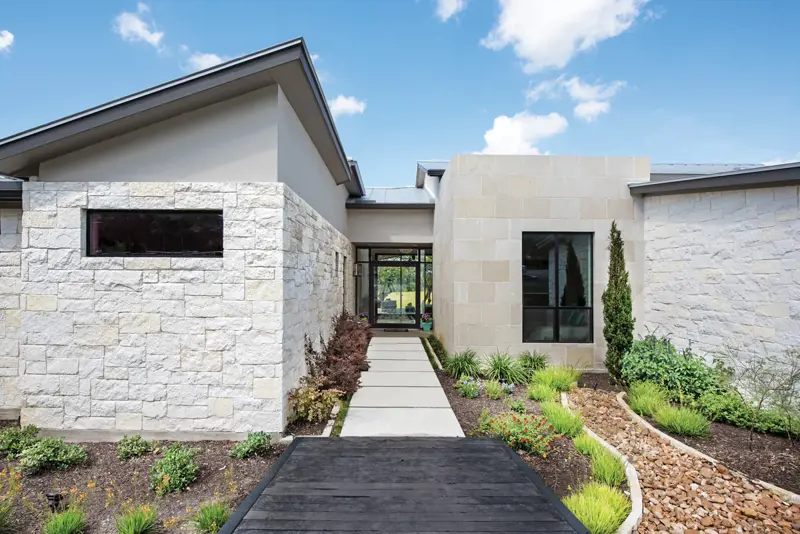
Understanding Aluminum Window and Door Finishes
Vinyl may be the preferred window and door material of the moment but that hasn’t always been the case. Just a few decades ago, aluminum was the material of choice. It’s still used in many homes, apartments, and commercial buildings today. The AMA Plaza (IBM Building) in Chicago and the new LA Rams stadium are made with anodized aluminum. In residential applications, it’s a popular choice for cladding material on windows and doors.
Today, aluminum windows and doors are available with energy-efficient components that weren’t used in the past and they’re available in lots of color options. Color is one of the most important considerations before you decide which windows and doors you’ll buy––so in this post, we’re interviewing Dr. Judy Runge to learn more about aluminum finishes.
Dr. Runge is a metallurgical engineer and surface scientist whose career spans over 35 years. Her expertise and experience encompass a variety of manufacturing processes for diverse materials as well as the science and engineering of metal finishing.
Ariana - Q1: Aluminum windows and doors are typically available in more color options than fiberglass and vinyl, why is that?
Dr. Runge: Vinyl and fiberglass are pigmented which limits the colors. Pigments are typically comprised of particles of various metal oxides that impart color as they are incorporated into the vinyl polymer. Pigmentation enhances the UV stability of the product but it doesn’t make the polymer itself more robust. The finishing processes used for aluminum, anodizing and powder-coating, give the consumer a wider range of color options.
Ariana - Q2: What is an anodized finish?
Dr. Runge: An anodized finish is the result of electrochemical oxidation. Electrochemical oxidation produces a highly ordered nanoscale columnar structure with a central pore in each column.

Image from Mid-States Aluminum Corp(↗).
The structure is a growth not a deposit or a coating––it is a 100% integrated finish which means there is a metallurgical bond between the base metal and the oxide. This makes it an outstanding finish for aluminum and aluminum alloys because it provides the best corrosion prevention. The structure of the oxide prevents any external corrosion agents from penetrating through the aluminum surface or at the boundary between the oxide and the aluminum alloy. The latter type of corrosion attack, filiform corrosion is why anodizing is sometimes used as a supplementary finish below a painted finish. But as a stand-alone finish, the central pore of the anodized finish enables the dyeing and coloring of the oxide. Many organic dyes and inorganic colors are available for anodized aluminum.
The anodizing process develops the surface microstructure of the aluminum extrusion. Therefore, if the aluminum surface microstructure is defective, the anodizing will appear defective as well. If the color looks blotchy it’s usually a reflection on the base metal quality. For the most part, aluminum extrusions are provided with a uniform and consistent structure, therefore, the anodized finish appears uniform and consistent, too.
Anodized products are limited to the colors available for dyeing or coloring, the typical colors available for architectural electrolytic coloring range from champagne to black. An undyed oxide will have the appearance of the aluminum itself while dyed oxides still allow the beauty of the metal to shine through the finish. Theoretically, you could get any color of the rainbow with dyeing or coloring an anodized finish.
Following the coloring and the dying the structure must be sealed, to prevent the dye from bleeding back, to enhance UV stability, and to enhance corrosion resistance. As a stand-alone finish, the anodic oxide is used for architecture–trim, windows, doors, curtain walls, and other structures.

Image Credit: Andersen Windows and Doors
Ariana - Q3: What is a powder-coated finish?
Dr. Runge: Powder-coating is a painting process whereby a material to be coated is charged and the static electricity that is over the surface attracts the powdered paint to the surface and it adheres. “The powder-coated component is then put through a feeding process that reflows the paint particles and makes a continuous layer of paint on the surface.”
As a deposit, corrosion can occur between the paint and the aluminum surface causing the painted finish to chip. To prevent this from happening the surface must first be primed. Often, a thin anodized layer will be grown on the material prior to powder-coating to prevent corrosion.

Image Credit: Voytek Gutowski via ResearchGate(↗).
–– What’s the difference between anodizing and powder-coating?––
Dr. Runge: The main difference between a powder-coated and anodized finish is in the complexity of the process by which they are manufactured. Both require the aluminum alloy be cleaned prior to the finishing process; however, powder coating requires a supplementary finish such as a conversion coating or a thin “flash” anodic oxide finish, in order to enhance adhesion and to prevent filiform corrosion.
Following finishing, the difference between anodizing and powder coating is in how they can be cleaned. An anodized finish cannot be cleaned with concentrated alkaline cleaners because these types of cleaners dissolve the oxide finish. One is not limited by the pH of the cleaner with a powder-coated finish, however, if there is a scratch, or any discontinuity in the finish, corrosion will happen.
Another difference is in the appearance––a painted surface will have a distinctly different appearance from an anodized finish. Whereas the anodized finish will take on the reflectivity that gloss the aluminum surface, painted surfaces are generally matte or less reflective than anodized finishes.
Ariana - Q4: Are there any other concerns homeowners should consider when choosing between anodized and powder-coated finishes?
Dr. Runge: With powder-coating, the quality of the metal does not govern the quality of the finish. This is an important consideration when you’re building a multicomponent structure where things (multiple windows and doors) have to match. Defects or differences in the finish are more noticeable in anodized aluminum products because the metal shines through the finish. This attribute gives a more vivid appearance to anodized aluminum, and is often considered more aesthetically appealing than a painted surface.
Another consideration is that typically, anodized finishes will not yellow but acrylic or vinyl coatings may tend to yellow with UV exposure. Pigments and other UV inhibitors may be added to prevent yellowing. Anodized colors can fade with age but generally don’t yellow.
Ariana - Q5: Which finishing process offers the most value to a homeowner?
Dr. Runge: They are on par with one another, you have to look at the bottom line and decide what gives you the best value. Then again, you can be a penny wise and pound foolish––I would never buy a powder-coated finish that wasn’t anodized first.
And why anodize? Because anodizing is beautiful and you get a higher perceived value with an anodized finish over a powder-coated finish. What drives choice is how something looks, when you’re making an investment you don’t want it to look like plastic, you want it to have the integrity and appearance of the metal that comprises the structure.
At the end of the day it’s about how you want your product to look, metallic or matte.
There’s more to aluminum finishes than color. As Dr. Runge explains, the finishes affect the overall look of the product but they also protect the metal from corrosion.
Here are some key takeaways from our interview:
- The finishing processes used for aluminum, anodizing and powder-coating, give the consumer a wider range of color options
- Anodized finishes have the best corrosion prevention elements
- Powder-coated aluminum sometimes have an anodized layer grown on it before powder-coating
- An anodized finish will take on the reflectivity that gloss the aluminum surface
- Painted surfaces are generally matte or less reflective than anodized finishes
Dr. Runge is internationally recognized as a nonferrous specialist focussing on the metallurgy of aluminum and aluminum alloys. You can learn more about aluminum and anodizing in her book, “The Metallurgy of Anodizing Aluminum: Connecting Science to Practice"(↗).
Oops!
We don't currently serve your area but do want to help you plan your project. Try our Build & Price tool to get an idea of window & door costs within DFW. Your area may be higher or lower but at least you'll have some idea of the price.
Thanks for stopping by.







